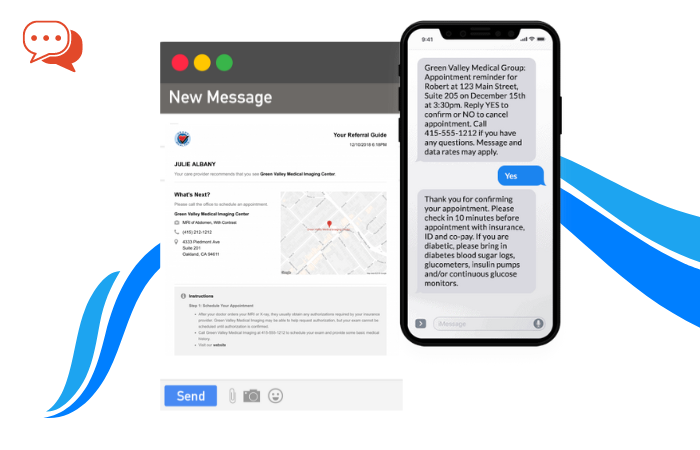Artificial intelligence (AI) has become a foundational aspect of our lives. The term is used to describe the intelligence demonstrated by machines. Can we call it superior or inferior to human intelligence? Is it a trend or today’s reality? The jury is still out, although it’s not better, and it’s not worse. It’s just different. AI beautifully complements human intelligence, allowing us to achieve more with our information.
When used in healthcare, AI practically changes the way patients are being treated. Out of all practical implementations, it’s enough for us to mention the most common ones:
- Medical imaging diagnostics
- Virtual health assistants
When you think about it that way, it’s easy to understand that we’ve all seen AI in healthcare. We’ve seen chatbots in online pharmacies. But the implementations go beyond those common occurrences.
Are you excited to learn about 10 exciting examples of AI being used today? We’ll mention examples from the medical industry, but we shouldn’t stop there. When we think about how the technology is being used in other industries, we can fully grasp its potential. But for now, we’ll stick to healthcare examples. From there on, you can take your research further.
A recent article in Forbes says, “The total public and private sector investment in healthcare AI is stunning: All told, it is expected to reach $6.6 billion by 2021, according to some estimates. Even more staggering, Accenture predicts that the top AI applications may result in annual savings of $150 billion by 2026.”
10 Great Examples of AI in Use
-
Robot Doctors Are a Real Thing Now
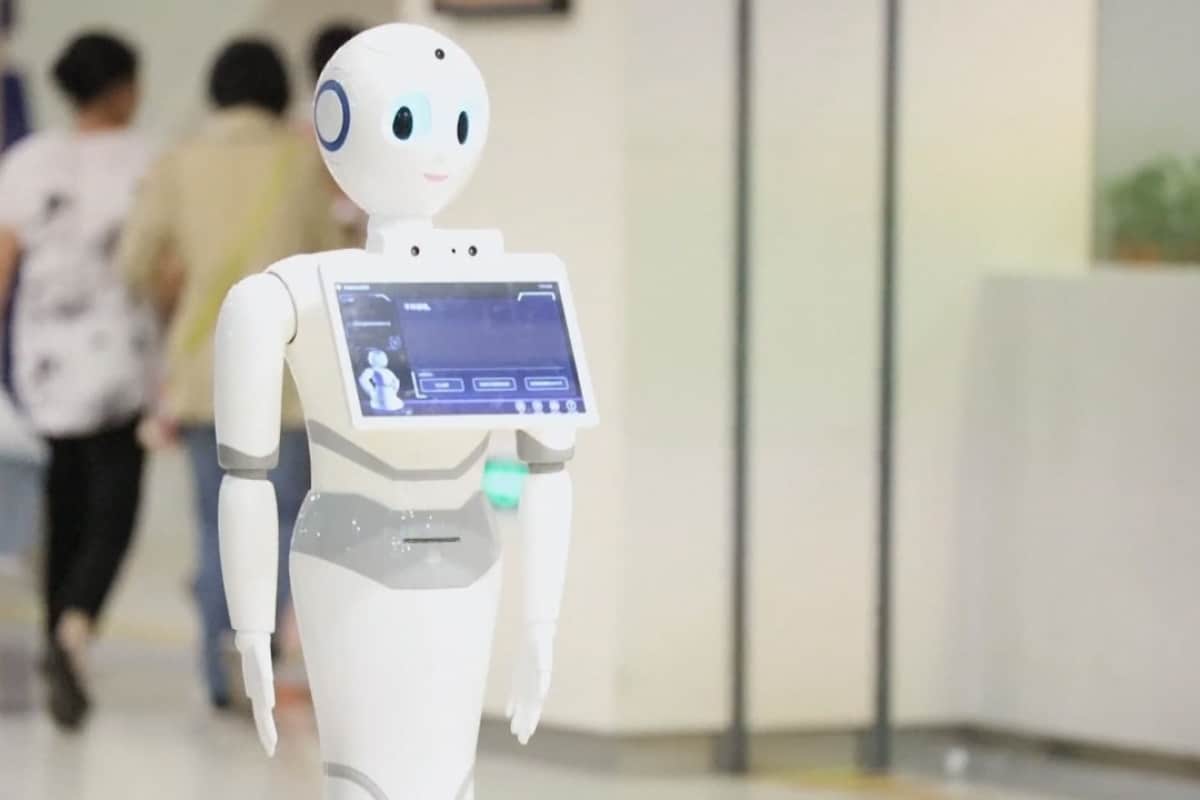
Image Credit Source
So you decide to go to the doctor. You get into their office, and surprise: it’s a robot attending to you. It sounds too science fiction to be true? In 2017, a robot passed the medical licensing exam in China. It’s an AI device that automatically captures and analyzes the patient’s information. It can even provide an initial diagnosis, which would help in future treatment.
Roberta Sanchez, a medical college essay writer, compares this technology to chatbots: “It’s no longer strange when you get to a website and see a chatbot initializing you into customer care, right? If we take a look at an assignment service in the UK, for example, the chatbot is a normal thing. You provide basic information about the order or ask simple questions, and the bot answers. Well, the medical robot does the same thing. It takes initial information and sends you off to the actual doctor, who’s prepared to get to treatment without wasting time.”
Is this robot ready to go into solo practice? Not quite. The robot will not treat you. But it’s absolutely capable of taking care of the first doctor-patient encounter. It takes the patient’s information and processes it. Then it makes logical suggestions to the doctor to help them identify the issue and proceed to adequate treatment.
No, this technology is not replacing human jobs just yet. But it’s beneficial for doctors, and we expect to see major progress in the algorithm in the future.
-
The AI-Assisted Treatment Center in China
The robot we just mentioned – do you know where it works? – In the first-ever AI-assisted treatment center. It’s located in China. This country invests a lot of money in artificial intelligence technology. The plan is for the country to foster a $1 trillion AI industry by 2030.
This treatment center is part of the project. The main purpose of the technology is to help doctors to review images. Radiologists still play the main role, but they get to save a lot of time. Robots also help the patients to get the information they need. They deliver accurate answers to over 200 medical questions, and they inform the patients about doctors’ shifts.
Carina Closs, doctor and medical writer for Write-My-Essay-for-Me.com, explains: “There’s no reason for us to hold any suspicion towards artificial intelligence in the medical industry. It’s the future, and it’s getting big. When we see it being implemented in this center, we can truly envision its potential. The patients are getting used to it, and the doctors certainly appreciate the ability to make the correct diagnosis in less time and with less effort.”
-
Robot Dentists Can Operate Alone
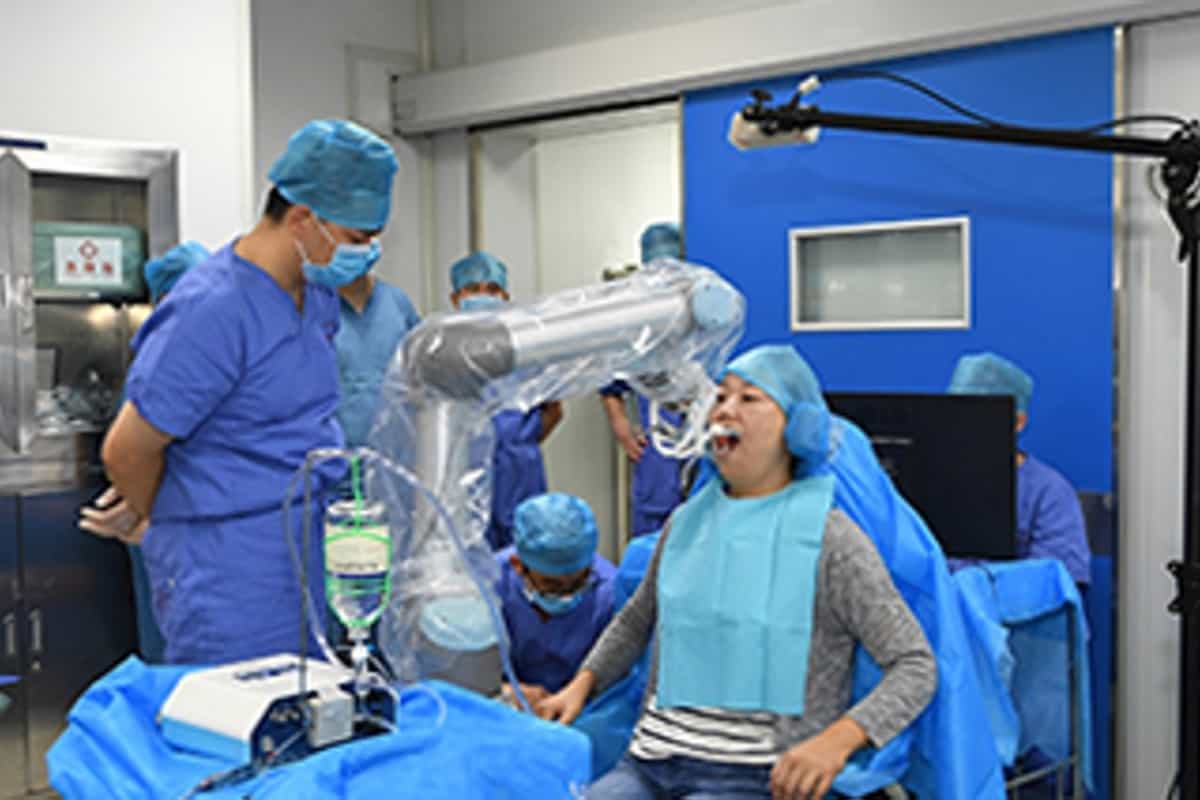
Image Credit Source
The robot doctor we talked about above won’t replace the actual doctors in the office. But a robot dentist can do much more. This is not science fiction. It’s a reality, and it’s amazing.
In this case, we can safely say that the robot is better than a human dentist. We’re talking about dental implant operations, which can be problematic when human error interferes with the process. The robot can avoid such problems. Plus, it will help overcome the shortage of dentists in many countries around the world.
The hour-long procedure took place in China in August 2018. The robot carried out the implant surgery autonomously. The medical staff was present, but they only supervised the process.
Was it scary for the patient? Probably. People don’t like dentists, regardless of whether they are robots or humans. But the fact that robots can perform dental surgery with a minimal margin of error is impressive. Even more impressive: the teeth that the robot implanted were created with 3D printing technology. We’re getting far, people!
-
Melanoma Detection Will Be Easier Thanks to AI
Melanoma is hard to detect with the human eye. Early detection is massively important, though. It literally saves lives. Artificial intelligence gives new hope. It has the potential to distinguish benign from malignant moles. The computer program analyzes the patterns of various skin conditions. Through a self-learning system, it will be able to make a difference between various dermatological conditions.
This technology is still not being implemented into diagnostic practices. Still, the researchers are very optimistic about it, and we should soon see it performing. AI can outperform human doctors in recognizing skin melanomas, and the technology is likely to get better.
Marissa Thompson, the medical writer for UK CareersBooster, explains how helpful this technology really is: “Can you imagine how many people around the world don’t have access to high-quality diagnostic services? They might live in rural areas, or their family doctors might not suspect melanoma until it makes tremendous progress. Artificial intelligence will change that. It will transform the access to proper diagnostics in those areas.”
-
AI Helps to Reduce Medication Non-Adherence Issues
Non-adherence with prescription medication is a serious healthcare issue. It’s a patient’s inability to follow recommendations for the treatment prescriptions they get. They may decide not to start treatment or decide to use doses different from the prescribed ones. They may also discontinue the treatment because they decided so.
Artificial intelligence is making a big difference in this aspect. Healthcare practitioners can use technology to reduce systemic waste by identifying patients prone to non-adherence with their prescription drugs. The program analyzes several variables, such as age, gender, payer type, geography, and out-of-pocket costs, to predict the possibility for non-adherence.
What will healthcare do with this information, anyway? Simple: they will identify the patients who need additional support to follow the treatment recommendations. They will focus more on communication, and they will explain exactly why it’s important for the patient to follow recommendations. We have to start somewhere, don’t we?
-
Image Analysis Is More Effective Thanks to AI
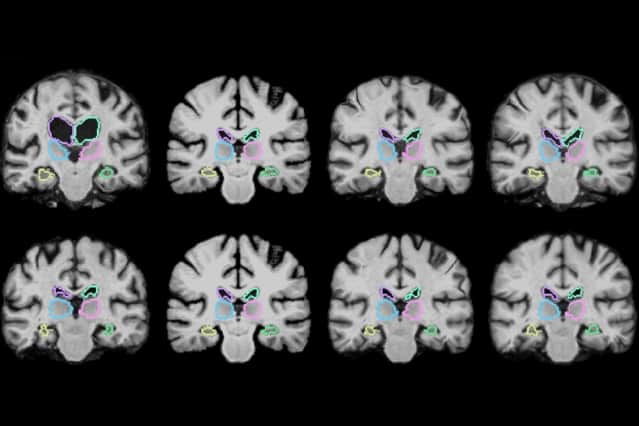
Image Credit Source
Medical imaging is the foundation of proper diagnostics. Image analysis, however, is time-consuming and tricky for doctors. It can take hours for them to compare 3D medical scans and analyze the changes. It’s a good thing that we’re making progress here.
In June 2018, a team of MIT researchers came out with the news that they developed a machine learning algorithm, which analyzes 3D scans up to 1,000 faster than doctors.
This is incredibly important, especially for surgeons. Sometimes they have to bring patients back to the operating room if they notice that they haven’t completely removed a tumor after surgery. The ability to read medical images faster is life-saving. With this technology, they can practically study changes in real-time.
We’re still talking theory here, but this technology could help surgeons see if a procedure was effective while they were still in the middle of it. This is what Adrian Dalca, who was part of the MIT research, said about the technology: “Today, they can’t really overlap the images during surgery because it will take two hours, and the surgery is ongoing. However, if it only takes a second, you can imagine that it could be feasible.”
-
Healthcare Marketing Is Getting More Relevant
People don’t believe in pharmaceutical companies. They assume it’s just an industry that wants them to get drugs because they pay for them, and that’s the only way for the industry to make money. When pharmaceutical companies engage in marketing, it just seems wrong.
Advanced medical marketers understand the problem. Toby Ryan, a marketing expert from RushMyEssay, explains: “Healthcare marketing is not just about creating a Facebook page and running an online advertising campaign. Marketing a healthcare practice in more than testimonials on a website. The patients and the dialogue (referrals) are how a practice can grow and increase revenue. It’s about listening to them and becoming part of the conversation. That’s the only way for the healthcare industry to look believable online. Artificial intelligence is a big part of that process.”
How exactly does AI take part in marketing? It analyzes patient behavior, which is the first step towards delivering a targeted message that means something. It draws information from lab results, hospital records, and Internet use. The marketer and the writing service will then adjust the tone of their message to fit the target audience’s needs.
Then, the analytical properties of AI will take the process to the next level. The marketing team will gain insight into the likes and dislikes of the patients. They will also monitor the online conversations about the brand so that they can deliver a timely response.
-
Automation of Administrative Tasks Makes Things Easier for Healthcare Pros
Nurses, doctors, and all other healthcare providers spend a lot of their time covering administrative tasks. A fertility specialist, for example, has to examine each patient and then write a detailed report. The report serves other specialists to understand the issue, but it’s also important for the next appointment with the same doctor. If this specialist spends five minutes writing a single report and sees 20 patients today, they spend 100 minutes in that activity. They could invest that time into other patients.
Technology is changing that. Voice-to-text transcriptions, in particular, can write chart notes that the doctor only needs to read and edit. But it goes beyond that. In 2016, Cleveland Clinic started collaborating with IBM to work towards data-driven personalized healthcare. The system can analyze thousands of medical papers through natural language processing technology to inform the doctor about treatment plans.
-
Virtual Nursing Assistants to the Rescue
According to a report by Syneos Health Communications, patients are very excited about the opportunity to get service from AI-powered nurse assistants. 64% of the survey respondents said they would be comfortable with AI virtual nurse assistants, mainly because of their 24/7 availability to provide support and deliver answers. The main fears regarding this technology involved the lack of human oversight and the potential for medical errors.
This technology is quickly going into practice. Sense.ly is a virtual nurse assistant that’s available through an app. In 2017, the app developers raised $8 million in funding, which is being used for developing advanced AI-powered nurse avatars for patients and clinics.
What’s the point? The app is supposed to keep the patients and healthcare providers connected between office visits. This is what Adam Odessky, Sense.ly’s CEO, said about the technology: “It’s always improving, learning more and more from patients, and as we partner with more organizations, bring in more disease states and research, we’ll layer in more protocols and content.”
-
Robot-Assisted Surgeries Are Happening
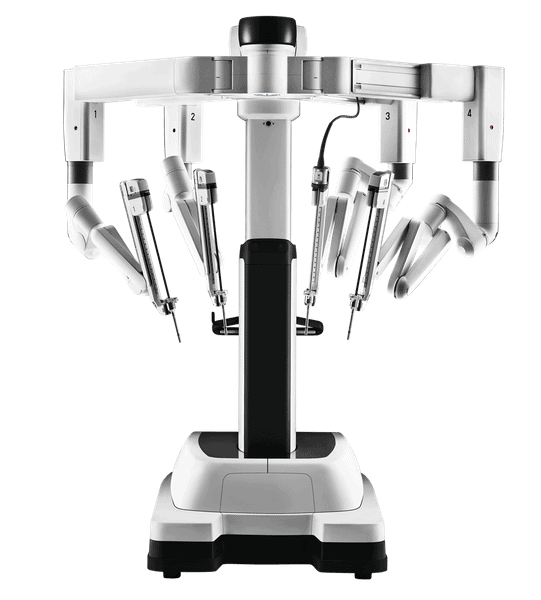
Image Credit Source
We’re still waiting for the day when large incisions during surgery will be part of history. Thanks to robots, that day is getting close. Da Vinci Si is a surgical robot that’s as minimally invasive as possible. The technology uses information from past surgical experiences to improve its techniques. The robot contains 3D cameras and various surgical instruments, which replicate the movements of the operating surgeon.
With this, the surgeon gets an opportunity to perform complex procedures with greater precision and more control over the instruments. They control the robot’s arms from a computer console positioned near the operating table.
Could you even imagine this 20 years ago? Most people didn’t see this coming in their wildest dreams about the future.
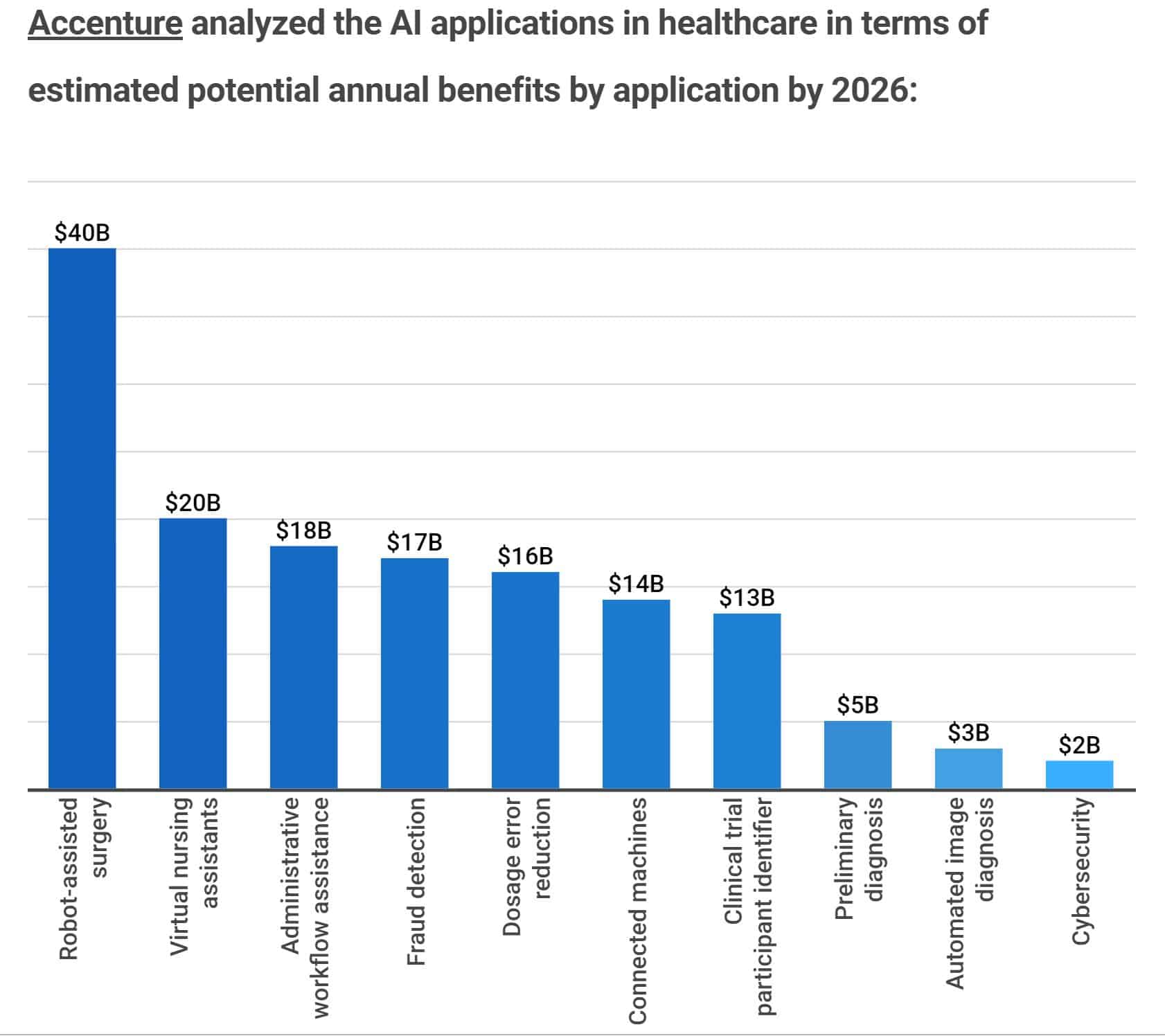
Artificial Intelligence Is Here!
With all the examples we described above, it’s clear that AI can reduce the potential for human error in healthcare, making the providers more effective. It has the possibility of improving patient access and optimizing procedures in healthcare practices. Still, many people are hesitant towards the application of this technology in medical practices. They fear that without constant human oversight, machines can cause damage.
The good news is that currently, AI is being used under careful human oversight. The day for robots that operate autonomously will probably come. But by then, we’ll be absolutely confident in their capacity.
Despite the concerns, the growing AI implementation in the medical industry is part of the inevitable progress. We already see huge benefits, which outweigh the potential for drawbacks.


